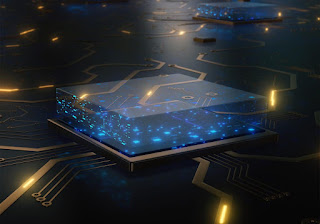One version of the quantum annealing processor might be the two-layer graphene structure. In that processor, the magnetic qubits will hiver between the graphene layers. And nanotubes. Nanotubes are acting as the pillars and their purpose is to make a four-side magnetic field that stabilizes the qubit. The qubit can be the ion-electron or proton. The data will input those qubits by using the high-accurate electromagnetic wave movement.
The data-input system might base the scanning tunneling microscope. In the point of each qubit would be the stylus that is transmitting and receiving the electromagnetic radiation. That system will make the qubits that are between those layers shine brighter.
Diagram 1
XXX=Graphene layer
()=Nanotube pillars
*=Qubits
W=Antenna that sends the anneal transmission
M=Antenna that sends the anneal transmission
There is possible to make the Trapped-ion system. That system bases the idea that the atoms that should anneal would close in the solid cube. This kind of system could use the absolute pure silicon bite. In that class can position the atoms that should anneal. The anneal can make by using laser or radio waves.
That glass can be made by using high-pressure systems. The air must remove from the structure. And then the silicon must press by using a mechanical press. There is the possibility to cover that structure by using an iron layer. And then the system can use the magnetic press. The magnetic system that is pushing those systems or using the cross pull can create extremely stable and hard structures. The atoms that can anneal can be put in the structure.
The thing is that the super cold water cooled near zero-kelvin temperature. The metal or noble gas atoms can position in that pure water. This kind of system requires extremely low temperature.
But otherways water is one of the best elements for quantum processors. The problem is the liquid form of water. For stabilizing that structure is needed very low temperature. And that thing is making necessary for creating a very powerful heat pump system.
Image :)https://scitechdaily.com/images/Advanced-Computer-Memory-Chip-Artist-Concept-1536x1075.jpg






No comments:
Post a Comment
Note: Only a member of this blog may post a comment.